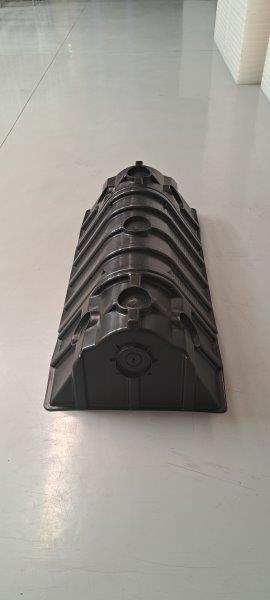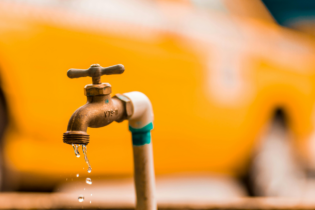A pioneer in the sanitation space, Envirosan Sanitation Solutions continues to provide the African continent with dignified sanitation solutions that don’t strain water supplies or municipal budgets.
“Government engineers and planners in South Africa are engaged in the delivery of improved sanitation to the 11% of South African households without sanitation services. An additional 26% of households have sanitation services that do not meet national standards for dignified sanitation. In addressing these issues, many engineers are stuck in a binary way of thinking, which is why a paradigm shift is needed,” explains Brian Lewis, CEO, Envirosan Sanitation Solutions.
“Towns and cities are generally characterised by flush toilets and piped infrastructure, while people living in townships often use pit toilets. Full flush is extremely expensive – not only in terms of actual water consumption but also in terms of infrastructure maintenance. VIP (ventilated improved pit) toilets are more robust and require less maintenance but have also
been known to exhibit several issues when it comes to unpleasant odours and child safety. Additionally, VIPs and UDDTs (urine diversion dry toilets) tend to fill up quickly and can be difficult to clean,” Lewis adds. Envirosan firmly believes that the people of South Africa deserve better. With close to two decades of experience in the sanitation space, Envirosan manufactures various sanitation technologies – from VIPs to UDDTs and low-flush toilets.
been known to exhibit several issues when it comes to unpleasant odours and child safety. Additionally, VIPs and UDDTs (urine diversion dry toilets) tend to fill up quickly and can be difficult to clean,” Lewis adds. Envirosan firmly believes that the people of South Africa deserve better. With close to two decades of experience in the sanitation space, Envirosan manufactures various sanitation technologies – from VIPs to UDDTs and low-flush toilets.
EaziFlush
One of Envirosan’s most well-known innovations is the EaziFlush™. It combines the advantages of both dry and flushing systems without any of their disadvantages. It is a system that has been able provide a sustainable and dignified sanitation solution to both communities and schools.
The EaziFlush can be used either as a pour-flush or a revolutionary low-flush toilet (using less than 2 ℓ of water per flush), and was developed in conjunction with the Water Research Commission (WRC), Department of Science and Technology, and Partners in Development
(PID) to deliver a hygienic, low-flush sanitation option to all communities – from people living in urban, peri-urban or rural communities to those living in informal settlements. The
EaziFlush incorporates a child- friendly seat to enhance child safety, as well as a water seal within the unit, which eliminates the odours and fly breeding commonly associated with VIPs
and UDDTs.
(PID) to deliver a hygienic, low-flush sanitation option to all communities – from people living in urban, peri-urban or rural communities to those living in informal settlements. The
EaziFlush incorporates a child- friendly seat to enhance child safety, as well as a water seal within the unit, which eliminates the odours and fly breeding commonly associated with VIPs
and UDDTs.
EaziSplit
The EaziSplit™ is a hybrid, low-flush, urine diversion sanitation technology based upon the EOOS design and the Bill & Melinda Gates Foundation (BMGF) Reinvent the Toilet initiative.
“We are extremely proud that we are one of the first partners to have a fully commercialised and approved BMGF design. Celinkungu Junior Secondary School (JSS) in the Eastern Cape was identified as urgently requiring sanitation and handwashing facilities. It was thus put
forward to receive the EaziSplit sanitation solution. We were able to install several EaziSplit units into Agrément-approved super structures, each fitted with an externally mounted 60 ℓ flush on-demand tank,” states Lewis.

EaziSoak
The most recent addition to its product line is EaziSoak™ – a modular plug-and-play soakaway system that replaces conventional fabric, stone, and perforated pipe soakaways. “A soakaway (often referred to as a French drain, leach/drain field, subsoil drain, or trench drain) is typically a trench that is filled with gravel or rock (or both), a perforated pipe, and is covered in a geotextile material that redirects surface water and groundwater away from thearea,” explains Lewis. French drains are primarily used to prevent surface water and groundwater from penetrating or damaging building foundations or placed behind retaining walls to relieve groundwater pressure. They are also used as an alternative to open ditches or storm sewers for streets and highways, as well as for the distribution of water from a typical septic tank sewage treatment system. Advantages of the EaziSoak, when compared to a traditional soakaway, include:
- improved percolation area, allowing for a smaller footprint
- completely stackable and easy to transport, without the use of construction equipment
- fast and easy installation due to its modular design
- greater storage capacity
- chambers are completely underneath, allowing for unobstructed infiltration rate of liquids
- perforations included in the chamber design allow for maximum liquid infiltration
- substitutes the use of stone, perforated pipe, and geofabric, which are not always readily available
- cost-effective.
Conclusion
By supplying a comprehensive range of cost-effective dry and low-flush sanitation systems, Envirosan is well positioned to restore safety, dignity, and sustainability to the alarmingly high percentage of rural and peri-urban populations on the African continent without access to quality sanitation.











